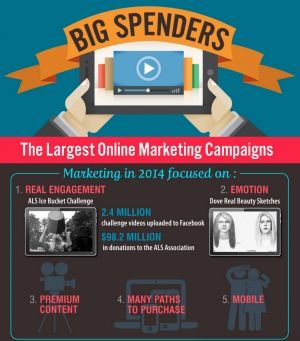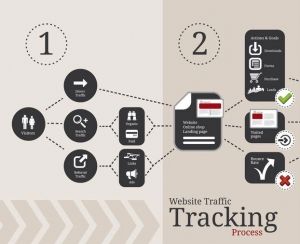
Jaime Nacach
Marketing Strategist
I love helping small businesses with their digital marketing and business strategy. I'm a young man with a passion in entrepreneurship and international experience in business development, marketing, sales, and web/graphic design.
Find me on: Team Page | LinkedIn | Google+ | Personal Website
Social Media Hashtags and Hashtag Research
Hashtags, are defined as a # sign followed by a word or phrase; when the two are combined, it becomes a link you can click on to see other posts that include the same hashtag.
Want to see public posts for a hashtag? Copy and paste these links into your browser and replace “Bloominari” with the hashtag of your choice:
- https://www.facebook.com/hashtag/bloominari
- https://twitter.com/search?src=typd&q=%23bloominari
- https://instagram.com/explore/tags/bloominari/
- https://www.pinterest.com/search?q=%23bloominari
Why Should You Use Hashtags?
- Your readers understand what your post is about. For example, “We’re excited to bring #DeepDishPizza to our #LaJolla location!” makes it clear that you’re talking about a specific product and a specific location.
- You improve the chances that people outside of your immediate network (i.e., people who are not yet following your social media account) will find your post. Your post will appear with all the other posts that include that hashtag.
Use hashtags sparingly and only for the key topics or phrases — especially on Twitter! (Remember, those # signs still count as characters.) Instagram has a limit of 30 hashtags in a comment.
What Hashtags Should You Use?
When posting, think about including hashtags for:
- your brand (e.g., #bloominari)
- important services (e.g., #socialmediamarketing)
- relevant events or holidays (e.g., #thanksgiving or #SDCC)
Depending on your industry, there may be specific hashtags that you may want to include that are unique to that community.
Google's Mobile Update, Bing ADs, and Instagram News
Let's highlight what's happening in today's Internet marketing world, and how it may affect and benefit your small business marketing.
In this post we'll take a look at the following news:
- Google's Moblie Update Slowly Rolling Out
- Bing will be ranking moible friendly (responsive) web pages better
- Bing ADs Shopping Campaings are now in Beta
- Instagram's new Filters, Emojicons in #Hashtags and new music channel
1. GOOGLE’S MOBILE UPDATE SLOWLY ROLLING OUT
Google announced that their Mobile Update went live, as promised, on April 21st. Those of us watching at that time were left ...well disillusioned with the lack of a dramatic or even in some case a noticeable change in mobile traffic.
Explainer Videos: A great, quick and affordable way to promote your brand, products and services.
What is an Explainer Video?
A great way to share your ideas in an easy-to-understand format.
An explainer video is a special type of marketing video focused on explaining to your target audience what your company, brand, products or services are all about in a few short minutes.
Explainer videos are generally between 30 seconds to 2-3 minutes long, sometimes longer depending on the content.
An Explainer Video is a very effective marketing tool to get your message out there in a fast, friendly and fun way.
Today we live in a content-intensive information world where people are bombarded with too many ads, posts, messages, which has resulted in them having a short attention span to any one message.
For this reason, a short, sweet and well-created explainer video can have a great impact on marketing an idea, brand, and benefits of a product or service.
What is the purpose of an Explainer Video?
The goal of an explainer video is simple: To highlight the key benefits of a product or service that a company offers.
People mostly care about how something can help them solve or alleviate a pain point, and a short video is a perfect way to convey this message in a short and direct way, cutting out all the clutter that a brochure or complex website would offer through written text.
What should an Explainer Video include?
The video should be short and to the point, that’s the goal of this digital marketing tool.
The video should include and highlight various key points to increase the likeliness that people will trust you, your message and will invite them to take action.
Your video should include the following key points:
- A short introduction to your company and brand
- Company’s tagline or key value proposition. What pain or problem do you help solve for your potential clients?
- A highlight of three to seven key benefits of your product/service, and how you help solve customer pain points.
- How are your offerings different than the rest of the competition? Why should clients choose to work with your business?
- Remind your audience once again what makes you an expert.
- Use a call-to-action towards the end and push your viewer to engage with you further.
- Finish the video with your company’s logo and contact information.
The Best Facebook Ad Types For Your Small Business
Facebook is a great, cost-effective way to drive traffic to your small business. The platform offers many different ways for you to reach potential customers, too! We’ve covered the basics of creating a boosted post or ad on Facebook, but today we’re going to highlight the best Facebook ad types that you can use for your small business.
Why are there different types of Facebook ads?
Facebook can’t show your ad to everyone. In addition to it costing a fortune, showing your ad to people who are unlikely to take action would be a waste of money.
Instead, Facebook creates a pool of potential people based on the targeting you select. Facebook will then choose who to show your ad to based on the type of ad you select.
This means that if your desired goal is to drive people to your website (a more general outcome), Facebook will show your ad to people who would be different from the people who’d see your ad if your goal was to get people to claim a coupon offer (a more specific outcome).
So when you create a Facebook ad, think about what’s most important to you. And if you’re not 100% sure what kinds of outcomes would be beneficial, we’ve got you covered!
What kinds of Facebook ads will boost your small business?
Website click ads are primarily used for driving traffic to a page of your choice. Your destination could even be a 3rd party page, but ideally you’d want to send the traffic to your own proprietary website. Facebook will show your ad to people who are more likely to click on it; the more relevant your ad is, the cheaper each click will be.
This type of ad is great for improving brand, event, offer, or product awareness. If you’re doing any kind of pixeling on your website (i.e., for ad retargeting), website click ads will help you grow the audience for that campaign as well.
Website conversion ads are primarily used to generate visitors who are most likely to take final actions and convert on your website. The more relevant your ad is, the cheaper each conversion will be.
While both website click ads and website conversion ads will send traffic to your website, people who are likely to click on your ads are not necessarily people who are likely going to convert. So if you know that conversions are essential, consider an ad optimized specifically for them.
If you’re interested in running website conversion ads, check out our blog post on Facebook conversion tracking!
Bloominari has reached the first page on Google's search!
Yep, Bloominari made it to Google's 1st page!
Getting to the first page of Google's search results is the goal of most online marketing strategies, and we'd like to share this mini celebration with you.
Bloominari can now be found on Google's first page for a few of our industry's keywords, and that's a reason to celebrate!
Getting here is no easy task, and it has taken over 10 months of hard work, dedication, the creation of lots of valuable information for our target audience through our blog, and other search engine optimization (SEO) techniques.
How to Allocate My Limited Marketing Budget To Promote My Company?
This post is the continuation of our previous post “Online Marketing On A Tight Budget - How To Prioritize Your Marketing Efforts”. Please read the previous post first, so that this post will make more sense to you.
Our previous article summarized the Top 5 Internet marketing tools and services to consider when promoting your business online. Let’s recap what they are:
In order of importance, the top 5 online marketing tools we recommend are:
- A Business Website: The home and basis of all your digital marketing efforts
- Online Advertising: The tool to drive people to your website immediately
- Social Media Presence: Helps you connect with your target audience instantly
- E-mail Marketing: Lets you stay in touch with your existing leads and clients
- Content Marketing, Blogs and SEO: Provides in-depth and valuable information to your end users, and proves to you audience by “showing” your company’s expertise and value proposition rather than just “telling them” what your company can do.
Small business and the Internet marketing world
At Bloominari, we mostly work with local small businesses which are either brand new to the Internet marketing world, or have used some digital marketing tools but don’t quite know exactly how to best use them to generate leads and grow their business.
Our marketing team is constantly talking to small business owners who are usually too busy managing their own company and don’t have the time, expert knowledge or know-how for how to market and promote their products and services in the most efficient way. That’s where our team of experts come into play and help our clients to focus on their business, while we focus on marketing it.
How to promote a business on the Internet with a limited budget
Let’s assume you have a new or existing company called “Baby Cubs” and you want to promote and market your business online. For illustration purposes, let’s assume you have a limited marketing budget of $5,000 USD to get started. How should you spend it?
First, let us recommend that you divide your marketing efforts into two stages.
- Stage 1: The Essentials - Build a very professional, and mobile-friendly business website, drive traffic to it and connect with your existing and potential customers on social media.
- Stage 2: Keeping Your Audience Engaged - Follow up with your customers through an e-mail newsletter: share your news, new products/services, and tips on how to help your clients. Then continue to bring value to them by sharing your expertise and valuable tips and tricks through a blog - which in turn will help increase your search engine rankings.
STAGE 1: The Essentials
Based on the example of the “Baby Cubs” company, we recommend that you invest your first $5000 dollars on Stage 1. Then, once your company starts (or continues) earning money you could move to Stage 2 and invest an additional $3,000-5000.
 Step 1: Build a professional business Website
Step 1: Build a professional business Website
First thing we ask our client is “Do you have a company website?”, if the answer is yes, it’s a good sign they understand the value of having an online presence. If they don’t have one, we discuss the importance of having one built and they key elements it must have in order to be used as a powerful marketing tool for the rest of their digital marketing strategy. Learn more about the importance of the website on our first post.
Recommended allocation of your marketing budget to build your professional small business website:
- 25-40% of $5,000 ($1,250-$2,000)
- Price range for a 10 page website: $1,000 - $5,000
If your Baby Cubs company already had a website, then you could invest the website design budget on the rest of your marketing strategy.
Related post: Business website, mobile app or both? How to choose the right solution
Step 2: Drive traffic to your website
In the same way that physical store owners try to get people through their door to bring in sales, you also have to drive virtual web users (Internet traffic) to your website, which is your company’s digital headquarters online.
How To Set Up Facebook Conversion Tracking
If you’re running Facebook ads or boosted posts, Facebook will automatically show you some great data about how many people see your ad and how many people are taking action by liking, sharing, or commenting on your ad. You’ll also see how many people are clicking to go to your website. By default, though, Facebook won’t tell you how many people actually converted as a result of your ad.
Luckily, this is easy for us to fix. Follow these simple steps to gain better insights into your company’s ad performance!
Why should I add conversion tracking to my website?
Facebook conversion tracking helps you understand:
- How many ad-referred visitors are taking action on your website
- Which ad or boosted post is leading to the most conversions
Without conversion tracking, you’re left guessing about which sales or mailing list sign-ups were the direct results of your paid advertising. It’s hard to justify investing money in online ads if you don’t know how many sales you received as a result.
All you need to set up Facebook conversion tracking is a Facebook ads account, a clear understanding of the conversion you’re tracking, and the page you’re going to be using to track the conversion. Here are a few examples:
- Purchases of a product are tracked via visits to a unique thank you page.
- Sign-ups for a mailing list are tracked via visits to a unique thank you page.
- Views of a key page, like a unique whitepaper download page, are tracked by visitors to that specific page.
You may even have multiple conversion types on your website, which is totally okay! Facebook will let you track as many as you want. Just make sure you select the right one when you create your ad or boosted post.
How do I set up Facebook conversion tracking?
- Go to Conversion Tracking and click on create a pixel.
- Facebook will ask you what kind of conversion you’re tracking. Select from Checkouts, Registrations, Leads, Key Page Views, Adds to Basket, or Other Website conversions.
- Give your pixel a name that you’ll remember.
- A box will pop up called view pixel code. Copy its contents.
- Go to the page you’re using to track that conversion and paste the code inside the tags. Save the page once you’re done.
Big Spenders 2014: The Largest Online Marketing Campaigns
This week, we'd like to share with you an interesting new Infographic that gives us an insight to the most successful online marketing campaigns, how much revenue they generated, what made them successful, and much more.
Facebook Boosted Posts Vs. Ads
Facebook Advertising: Should You Use Boosted Posts, Ads, or Both?
Many small businesses are looking to Facebook as a cost-effective way to get their content, deals, and offers in front of new potential customers. In this blog post, we’ll walk you through the two main ways of advertising on Facebook — boosted posts and ads — and give you the knowledge you need to get started!
Boosted Posts
If you’ve posted anything to your business’ Facebook Page, you’ve probably seen a blue button, reading “Boost Post,” in the lower-right corner of each post. Clicking on this button will begin the boosted post creation process.
Boosted posts enable you to easily get a larger audience for a single specific Facebook post. Since you can include as much or as little information as you want in your post, you can make your paid content very informative. You’ll instantly see how many more people you can reach with a boosted post than an unboosted post.
Campaign URLs 101
What are Campaign URLs, anyway?
If you’ve ever clicked a link, then noticed a string of text at the end of it that begins with a ? and ends with a jumble of text — maybe something that looks like www.examplepage.com/?utm_source=facebook&utm_medium=post&utm_campaign=organicsocialmedia — you’ve stumbled across a campaign URL!
But what is a campaign URL, exactly, and why should you use one?
Online Marketing 101
Online marketing is all about sending visitors to your website from various traffic sources and encouraging those visitors to take action.
The action will be different depending on your small business; some examples include calling your brick-and-mortar location, signing up for your email list, downloading a special coupon or eBook.



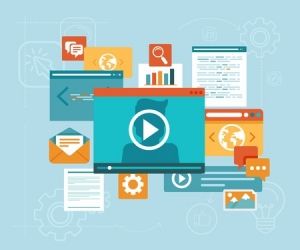

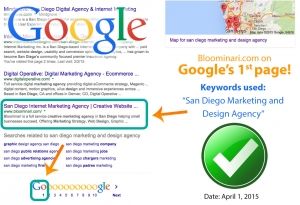

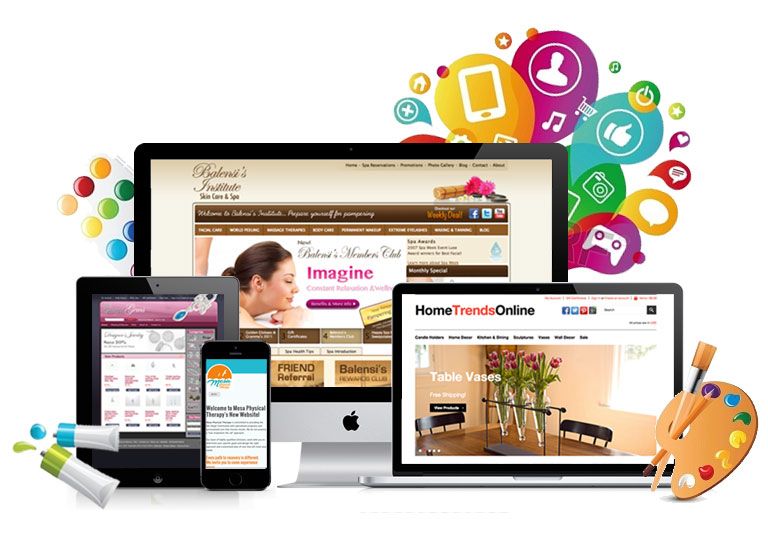 Step 1: Build a professional business Website
Step 1: Build a professional business Website
